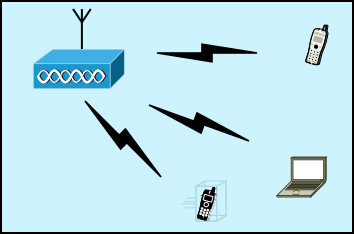 When planning a WiFi network that is supposed to support a high number of users, like in a big office, a mall or a school, it becomes important to account for several pieces of information that are not directly related to the network itself.
When planning a WiFi network that is supposed to support a high number of users, like in a big office, a mall or a school, it becomes important to account for several pieces of information that are not directly related to the network itself.
These are pieces of information that affect the way the network can be used, and that are often under-evaluated.
The network engineer should in fact take into account not just the direct network needs, like the number of subscribers, the throughput for each subscriber, and the percentage of subscribers that will simultaneously try to access the WiFi network.
The network engineer needs also to take into account floor plans, coverage areas, building and wall materials.
This additional information will allow the calculation of the correct number of access points (AP) and their topological distribution, preventing the overlapping of different channels in the same area, which would negatively affect the connectivity of the various devices to the WiFi network, due to the competition of multiple AP for the same device.
From the topological perspective, additional attention needs to be given also to the WiFi protocol being used. For example, the use of 802.11b/g/n favors a distribution of AP that only use channels 1, 6 and 11, and those AP have to be distributed in sort of square cells distributed in a grid where the cells are half shifted, to avoid channel overlapping.
On the other end, the use of 802.11a/h, which also work on a different frequency band, favors a distribution where the cells are of hexagonal shape. In addition, the topology also affects which channels should be used with such protocol, since different channels may have different bandwidth and might have overlapping frequencies.




Leave a Reply